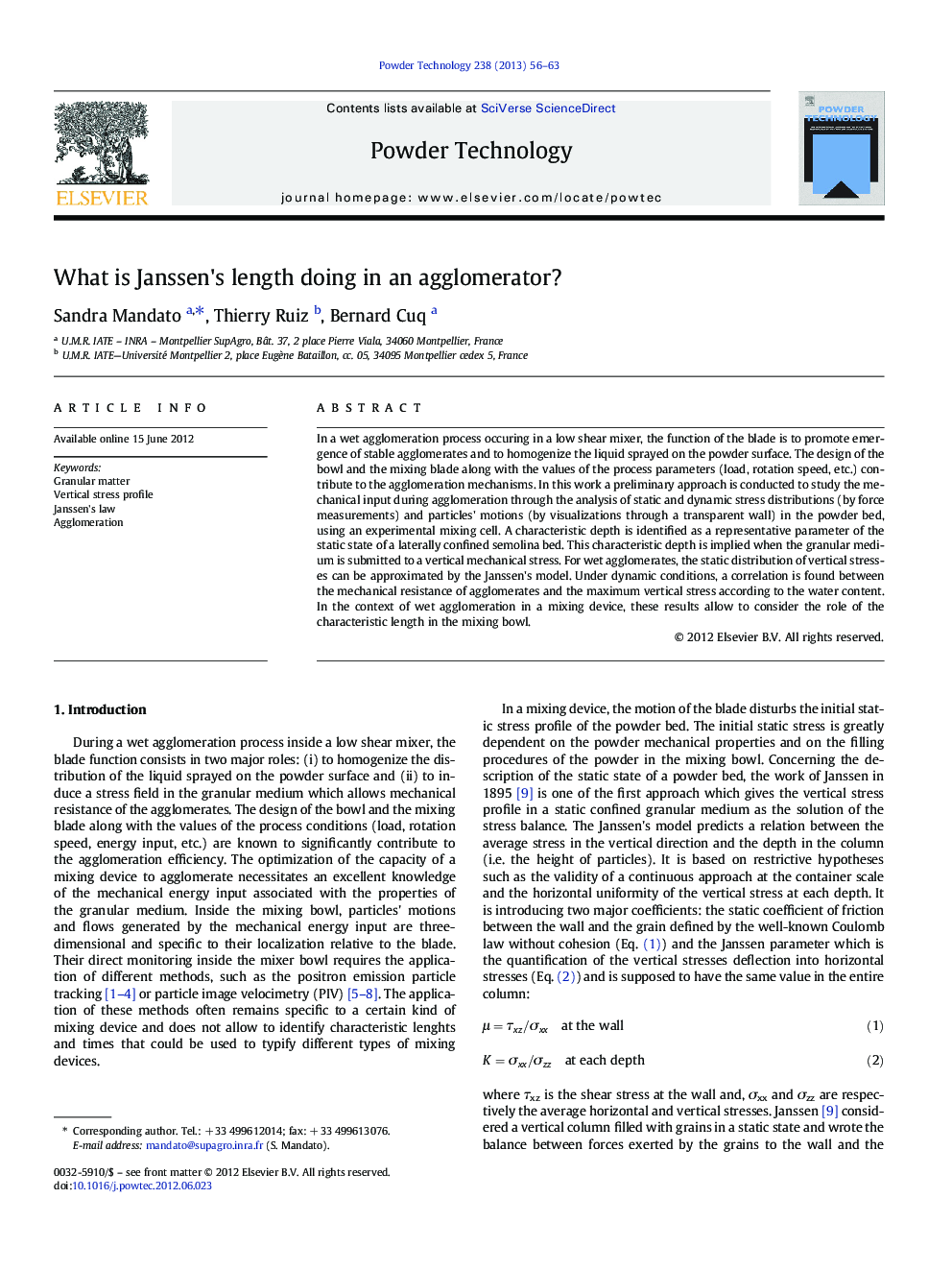| Article ID | Journal | Published Year | Pages | File Type |
|---|---|---|---|---|
| 236716 | Powder Technology | 2013 | 8 Pages |
In a wet agglomeration process occuring in a low shear mixer, the function of the blade is to promote emergence of stable agglomerates and to homogenize the liquid sprayed on the powder surface. The design of the bowl and the mixing blade along with the values of the process parameters (load, rotation speed, etc.) contribute to the agglomeration mechanisms. In this work a preliminary approach is conducted to study the mechanical input during agglomeration through the analysis of static and dynamic stress distributions (by force measurements) and particles' motions (by visualizations through a transparent wall) in the powder bed, using an experimental mixing cell. A characteristic depth is identified as a representative parameter of the static state of a laterally confined semolina bed. This characteristic depth is implied when the granular medium is submitted to a vertical mechanical stress. For wet agglomerates, the static distribution of vertical stresses can be approximated by the Janssen's model. Under dynamic conditions, a correlation is found between the mechanical resistance of agglomerates and the maximum vertical stress according to the water content. In the context of wet agglomeration in a mixing device, these results allow to consider the role of the characteristic length in the mixing bowl.
Graphical abstractLeft: picture of the glass cell filled with semolina during the blade motion (α is the angle of repose of semolina). Right: vertical stress profiles under dynamic conditions for semolina at different blade speeds.Figure optionsDownload full-size imageDownload as PowerPoint slide
